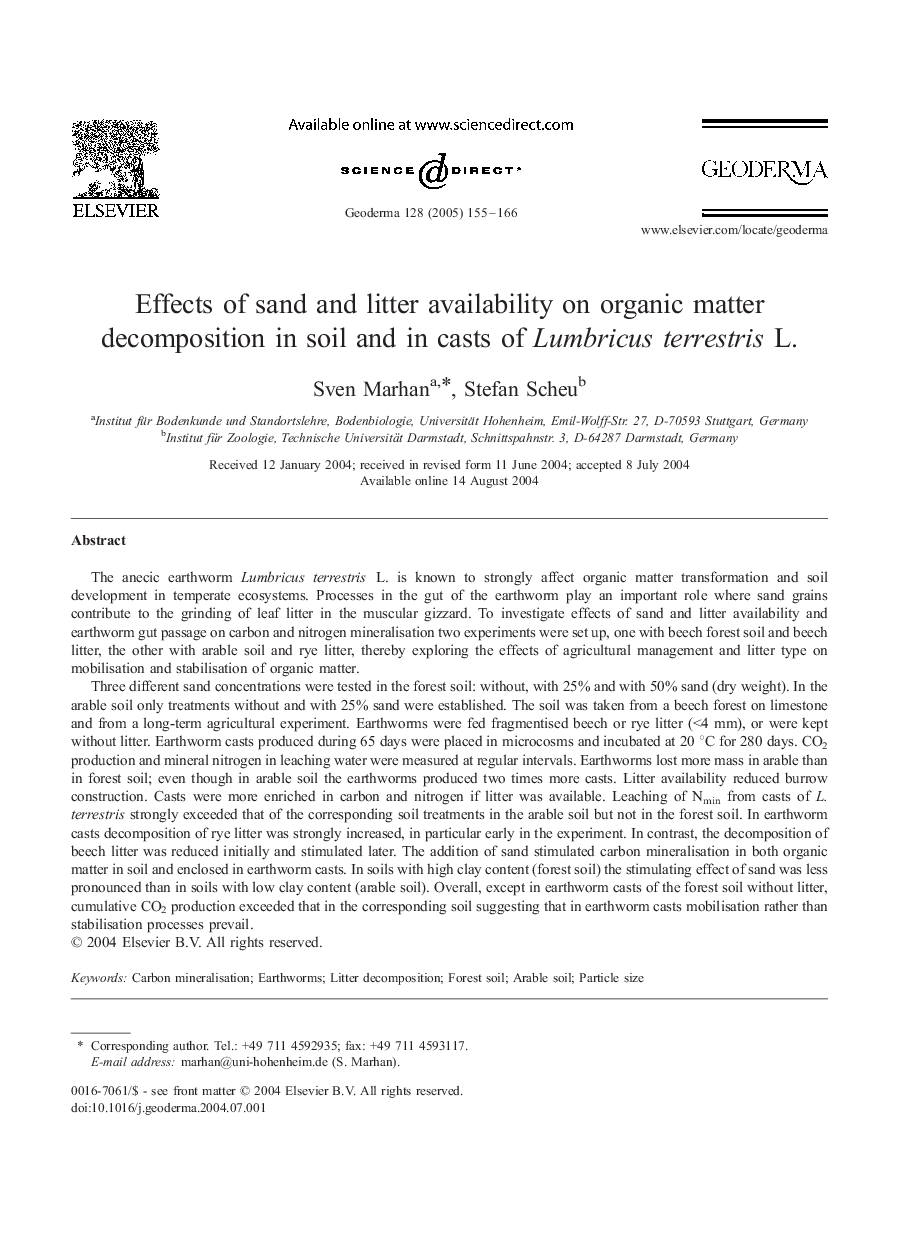| Article ID | Journal | Published Year | Pages | File Type |
|---|---|---|---|---|
| 9490418 | Geoderma | 2005 | 12 Pages |
Abstract
Three different sand concentrations were tested in the forest soil: without, with 25% and with 50% sand (dry weight). In the arable soil only treatments without and with 25% sand were established. The soil was taken from a beech forest on limestone and from a long-term agricultural experiment. Earthworms were fed fragmentised beech or rye litter (<4 mm), or were kept without litter. Earthworm casts produced during 65 days were placed in microcosms and incubated at 20 °C for 280 days. CO2 production and mineral nitrogen in leaching water were measured at regular intervals. Earthworms lost more mass in arable than in forest soil; even though in arable soil the earthworms produced two times more casts. Litter availability reduced burrow construction. Casts were more enriched in carbon and nitrogen if litter was available. Leaching of Nmin from casts of L. terrestris strongly exceeded that of the corresponding soil treatments in the arable soil but not in the forest soil. In earthworm casts decomposition of rye litter was strongly increased, in particular early in the experiment. In contrast, the decomposition of beech litter was reduced initially and stimulated later. The addition of sand stimulated carbon mineralisation in both organic matter in soil and enclosed in earthworm casts. In soils with high clay content (forest soil) the stimulating effect of sand was less pronounced than in soils with low clay content (arable soil). Overall, except in earthworm casts of the forest soil without litter, cumulative CO2 production exceeded that in the corresponding soil suggesting that in earthworm casts mobilisation rather than stabilisation processes prevail.
Related Topics
Physical Sciences and Engineering
Earth and Planetary Sciences
Earth-Surface Processes
Authors
Sven Marhan, Stefan Scheu,
